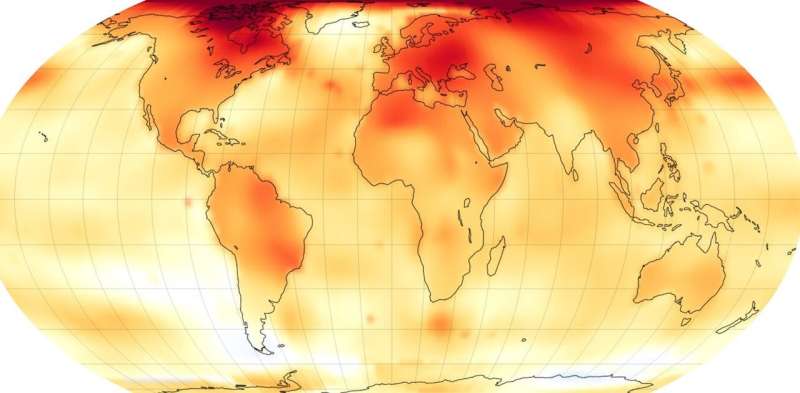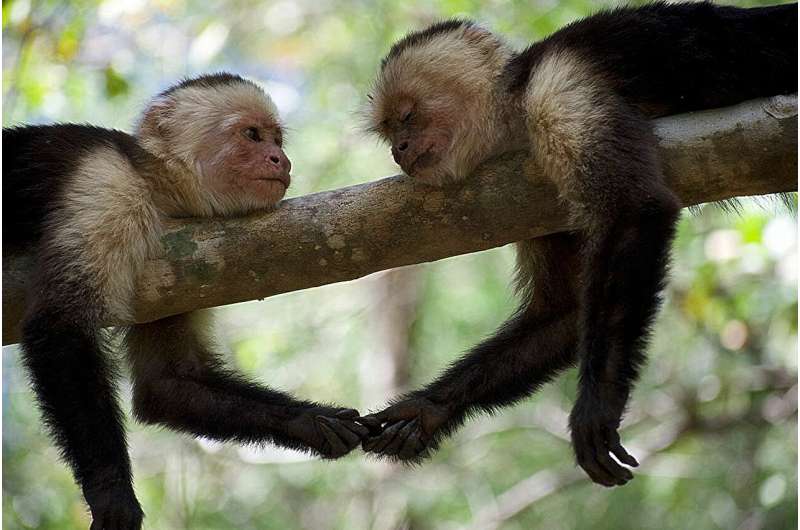Edit Content
Trending






White-faced capuchin monkeys in Costa Rica who experienced more intense physiological responses to mild droughts were more fit to survive extreme drought, researchers found in a new UCLA-led study.
Most research on wild animals and humans is focused on the damage that stress response causes to a system—”the wear-and-tear.” In this new study, however, published in the journal of Science Advances, a team of researchers sought to examine the adaptive nature of the stress response in wild primates and how a more robust stress response might help them when faced with catastrophic events.
“We wanted to understand how the stress response adaptively helps these individuals survive greater challenges,” Susan Perry, a UCLA evolutionary anthropologist, field primatologist and co-author of the study, said.
In the absence of an experimental design that could apply the same stressor to all individuals in a population, the researchers took advantage of a natural experiment—a particularly severe El Niño drought—to investigate the relationship between hormonal responses to this extreme stressor and survival outcomes of white-faced capuchins at the Lomas Barbudal Capuchin Monkey Project in Guanacaste, Costa Rica.
In Guanacaste, Perry and a team of researchers have been documenting the lives of monkeys and studying their social behaviors and survival strategies for 35 years. For this particular study, Perry’s research group (including current and former graduate students, and research assistants Irene Godoy, Ashley Mensing, Juliane Damm and Colleen Gault) collaborated with University of Michigan researchers Jacinta Beehner and Sofia Carrera.
The El Niño drought that spread across Central and South America from 2014 to 2016 was the biggest in recent history and led to the deaths of many monkeys. While devastating for the monkeys and the researchers who have studied them for so long, Perry’s team was able to make use of the environmental circumstances and samples collected from the six years prior to study the relationship between the endocrinologic stress response and survival in the white-faced capuchins.
During the drought, the monkeys started to lose weight, revealing vertebrae and rib cages, and mothers even rejected caring for and nursing their infants, abandoning them to go forage. Monkeys who would normally babysit infants in a mother’s absence were also not taking on childcare responsibilities. Mortality rates soared, particularly for infants and older females. This was the only time in Perry’s long-term study that these monkeys, who are usually behaviorally flexible, failed to adapt to an environmental stressor by simply changing how they behaved (e.g., changing their diet).
For 14 female monkeys who survived and 14 who had died, the researchers analyzed glucocorticoid levels in fecal material that had been collected from them in the six years prior to the El Niño drought (2008-2013). Glucocorticoids are steroid hormones that regulate metabolism, inflammation and the immune system.
Discover the latest in science, tech, and space with over 100,000 subscribers who rely on Phys.org for daily insights. Sign up for our free newsletter and get updates on breakthroughs, innovations, and research that matter—daily or weekly.
The researchers discovered that the monkeys who showed a steeper rise in these stress hormones during the mild droughts were more likely to survive the severe El Niño drought than those monkeys who experienced less of a stress response. The findings controlled for other conditions known to affect these hormone levels, such as pregnancy and time of day.
With a clearer picture of what an adaptive stress response looks like for this species and population, Perry’s team can begin to ask questions about the origin and maintenance of individual differences in the endocrine stress response and whether these differences affect survival.
The study also puts a spotlight on the value of long-term studies in the face of climate change. As weather intensifies globally, longitudinal studies of how wild animals cope with changes in temperature, rainfall and food availability can help us understand which species can adapt rapidly through learning or physiological flexibility and which species lack the ability to cope with major environmental changes during their lifetimes.
This knowledge can be useful for conservation reasons. For example, a population of highly endangered animals that cannot quickly adapt to change might need to be moved to a place that now has climatic conditions that match the environment in which that population evolved.
More information: Sofia C. Carrera et al, Stress responsiveness in a wild primate predicts survival across an extreme El Niño drought, Science Advances (2025). DOI: 10.1126/sciadv.adq5020
Provided by University of California, Los Angeles
Citation: El Niño drought reveals survival advantage in monkeys with robust stress response (2025, January 22) retrieved 22 January 2025 from https://phys.org/news/2025-01-el-nio-drought-reveals-survival.html
This document is subject to copyright. Apart from any fair dealing for the purpose of private study or research, no part may be reproduced without the written permission. The content is provided for information purposes only.
©2024. Livebuzznews. All Rights Reserved.